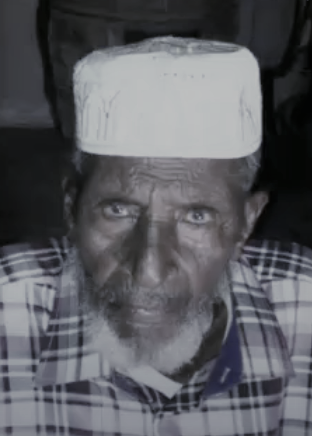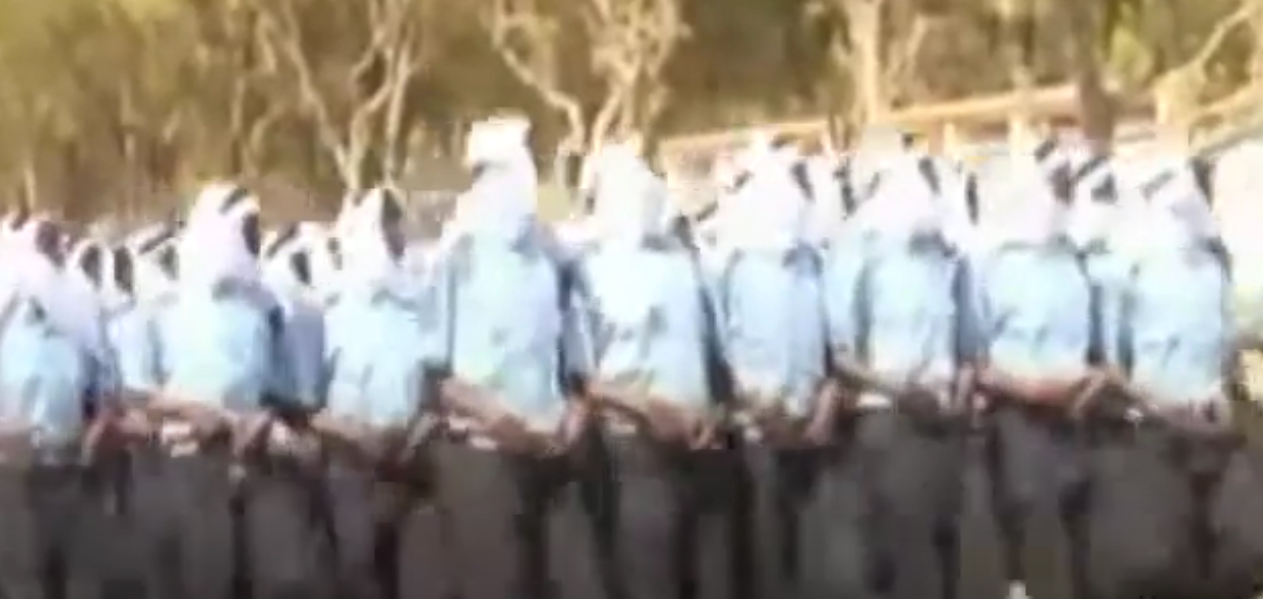|
Ugaasyo
The Baho Nugaaleed ( so, Baho Nugaaleed, ar, باهو نوغال), is a loose Somali clan confederation that is part of the Dhulbahante clan-family. The primary homeland of these clans include the regions of Sool and Togdheer in Somaliland, the Lower Juba region in Somalia and the Dollo Zone in Ethiopia. The Bah Nugaaleed are composed of three major sub-groups in accordance with their locality in the SSCD regions. These groups are Qayaad, the Ugaasyo, the Reer Aymeed and Reer Oodeed (including Qayaad). The primary purpose of the confederation is to balance the political weight of the Farah Garad and Mohamoud Garad. Beyond this the various sub-clans that enumerate under the confederation do not necessarily share any exclusive clan allegiances. Members of the clan confederation have a significant presences in the cities of Las Anod, Buuhoodle, Garowe and Kismayo. Bah Nugaal subclans Reer Aymeed The Reer Aymeed subclans of Bah Nugaaleed are distinguished by their tende ... [...More Info...] [...Related Items...] OR: [Wikipedia] [Google] [Baidu] |
Dhulbahante
The Dhulbahante ( so, Dhulbahante, ar, دلبةنتئ) is a Somali clan family, part of the Harti clan which itself belongs to the largest Somali clan-family — the Darod. They are the traditional inhabitants of the physiographic Nugaal in its topographic sense, and its pre-independence administrative sense, which included Doollo. The clan's progenitor is buried at Badweyn. The Ali Gheri clan were the first tribe to adopt the Dervish (Daraawiish) identity.*** Colonial administrator Douglas Jardine, stated the following about Dervish demographics: The supreme Garad of the Dhulbahante is currently Garad Jama Garad Ali. Overview The extended formal name of Dhulbahante, the clan's forefather was ''Said Saleh Abdi Mohamed Abdirahman bin Isma'il al-Jabarti'' whose resting place is Badweyn. According to Somali tradition, his mother hailed from the of Arap clan of the Isaaq clan-family. This maternal connection has enticed a mutual affinity between the two clans. The primary ... [...More Info...] [...Related Items...] OR: [Wikipedia] [Google] [Baidu] |
Mohamoud Garad
The Mohamoud Garad ( so, Maxamuud Garaad, ar, محمود جراد, Full Name:'' ’Mohamoud Shirshore Habarwa Abdullah Muse Said Saleh Abdi Mohamed Abdirahman bin Isma'il al-Jabarti'' ) is a Somali clan. Its members form a part of the Dhulbahante, a sub-division of the Harti/Darod clan-family. The clan is divided into three main sub-clans ― namely the ''Jama Siad'', the ''Ugaadhyahan'' and ''Omar Wa’eys''. The traditional clan chief of Mohamoud Garad is Garad Saleban Garad Mohamed. Overview For political purposes, the Mohamoud Garad further sub-divided into Naleya Ahmed (the numerically largest sub-clan), Jama Siad and a confederation dubbed ''"Galool oriye"'' which encompasses all other sub-clans including Nuur Ahmed, Wa’eys Abdulle, Mohamoud Ugaadhyahan and Omar Wa’eys. The ''Jama Siad'' primarily inhabit the ''Casuura'' plains in western Sool, centred around the town of Yagoori. The ''Naleye Ahmed'' occupy a very large territory of centered on the ''Xadeed'' pla ... [...More Info...] [...Related Items...] OR: [Wikipedia] [Google] [Baidu] |
Somali Language
Somali (Latin script: ; Wadaad writing, Wadaad: ; Osmanya: 𐒖𐒍 𐒈𐒝𐒑𐒛𐒐𐒘 ) is an Afroasiatic languages, Afroasiatic language belonging to the Cushitic languages, Cushitic branch. It is spoken as a mother tongue by Somalis in Greater Somalia and the Somali diaspora. Somali is an official language in Somalia and Ethiopia, and a national language in Djibouti as well as in northeastern Kenya. The Somali language is written officially with the Somali Latin alphabet, Latin alphabet although the Arabic alphabet and several Somali scripts like Osmanya script, Osmanya, Kaddare script, Kaddare and the Gadabuursi Somali Script, Borama script are informally used.Lewis, I.M. (1958)The Gadabuursi Somali Script ''Bulletin of the School of Oriental and African Studies'', University of London, Vol. 21, pp. 134–156. Classification Somali is classified within the Cushitic branch of the Afroasiatic family, specifically, Lowland East Cushitic languages, Lowland East Cushitic in ... [...More Info...] [...Related Items...] OR: [Wikipedia] [Google] [Baidu] |
Las Anod
Las Anod ( so, Laascaanood; ar, لاسعانود) is the administrative capital of the Sool region of Somaliland. Territorial dispute The city is disputed by Puntland and Somaliland. The former bases its claim due to the kinship ties between the Dhulbahante clan and the dominant clan in Puntland, the Majeerteen, whilst the latter's claim is grounded on the border of the former British Somaliland Protectorate. The city was the proclaimed capital of Khatumo State throughout its existence until its dissolvement in 2017. Somaliland forces captured the city in the Battle of Las Anod in 2007, ousting Puntland forces, and has maintained full control of the city in all aspects since. Until now Somaliland governs Las Anod with little legitimacy or popularity, while regular unknown assassinations have deteriorated the security situation. Ahmed Musa reports, the residents of Las Anod have not fully accepted Somaliland's presence in their city: Somaliland still governs Lasanod with ... [...More Info...] [...Related Items...] OR: [Wikipedia] [Google] [Baidu] |
Ciid
Ciid or 'Iid ( so, Arlo Ciideed) is an archaic native geographic name for the land between the region of Mudug and the Nugaal Valley, roughly congruous with the northern Bookh district in Ethiopia. As such, Ciid constitutes the tripoint of the former three colonial powers Ethiopian Empire, Abyssinia, British Empire, Britain and Italy, thus situating Mudug immediately southeast of Ciid, the Nugaal Valley immediately north of Ciid, and Haud to the west of Ciid. One historian referred to it as the syrup-colored land and it is today embodied by Ciid towns such as Xamxam, Magacley, Qoriley, Biriqodey, Beerdhiga and Gumburka Cagaare. Ciid constitutes the northernmost parts of the disputed Somali-Ethiopian territory outlined in the 16 May 1908 Italo-Ethiopian border agreement also called the 1908 Convention. A 2001 Journal from Indiana University describes Ciid as partially overlapping with Boocame District by referring to Ciid as ''north of the Mudug region and the west of the Garowe re ... [...More Info...] [...Related Items...] OR: [Wikipedia] [Google] [Baidu] |
Muqaddim
( ar, مقدم) is an Arabic title, adopted in other Islamic or Islamicate cultures, for various civil or religious officials. As per the Persian records of medieval India, muqaddams, along with khots and chowdhurys, acted as hereditary rural intermediaries between the state and the peasantry. Originating during the Delhi Sultanate, the earliest known reference to the muqaddami system dates from the first decades of the 13th century, when Hasan Nizami wrote of a delegation of muqaddams offering gifts to Sultan Qutb ud-Din Aibak. Muqaddams were tasked with revenue collection in the areas under their jurisdiction, for which they received either 2.5% as remuneration or rent-free land equalling that amount. The socio-economic status of muqaddams varied over time; during the revenue reforms of Alauddin Khalji, many were impoverished due to the abolition of their traditional privileges. However, in other periods the muqaddams "were prosperous enough to ride on costly Arabi and Iraqi hor ... [...More Info...] [...Related Items...] OR: [Wikipedia] [Google] [Baidu] |
Maxkamadaha Darawiishta
Haroun, also called Fadhiweyn, and natively transliterated as Xarunta in Somali, was a government and headquarters of the Dervishes, headed by Faarax Mahmud Sugulle. According to Claude Edward Marjoribanks Dansey, the political officer in the British Somali Coast Protectorate consisted of 400 individuals. The capture of the haroun was regarded as conceivably resulting in the Sayyid's surrender.Official History of the Operations in Somaliland, 1901-04, page 319, year 1907 "The instructions to Kenna were "to endeavour by every means to locate the position of the Haroun, and having done so, to try and surprise it by long-distance marching with his mounted troops ... Though the Mullah himself might escape, the capture of the Haroun meant the destruction of his prestige, and, in all probability, his own final surrender." In the third expedition, major Paul Kenna was tasked "by every means" to find where the haroun is.Official History of the operations in Somaliland 1901-1904 "The i ... [...More Info...] [...Related Items...] OR: [Wikipedia] [Google] [Baidu] |
Burcadde-godwein
Haroun, also called Fadhiweyn, and natively transliterated as Xarunta in Somali, was a government and headquarters of the Dervishes, headed by Faarax Mahmud Sugulle. According to Claude Edward Marjoribanks Dansey, the political officer in the British Somali Coast Protectorate consisted of 400 individuals. The capture of the haroun was regarded as conceivably resulting in the Sayyid's surrender.Official History of the Operations in Somaliland, 1901-04, page 319, year 1907 "The instructions to Kenna were "to endeavour by every means to locate the position of the Haroun, and having done so, to try and surprise it by long-distance marching with his mounted troops ... Though the Mullah himself might escape, the capture of the Haroun meant the destruction of his prestige, and, in all probability, his own final surrender." In the third expedition, major Paul Kenna was tasked "by every means" to find where the haroun is.Official History of the operations in Somaliland 1901-1904 "The i ... [...More Info...] [...Related Items...] OR: [Wikipedia] [Google] [Baidu] |
Bohol Warabe
Bohol (), officially the Province of Bohol ( ceb, Lalawigan sa Bohol; tl, Lalawigan ng Bohol), is an island province of the Philippines located in the Central Visayas region, consisting of the island itself and 75 minor surrounding islands. Its capital is Tagbilaran. With a land area of and a coastline long, Bohol is the tenth largest island of the Philippines.The Island-Province of Bohol Retrieved November 15, 2006. The province of Bohol is a first-class province divided into 3 , comprising 1 |
Golaweyne
Haroun, also called Fadhiweyn, and natively transliterated as Xarunta in Somali, was a government and headquarters of the Dervishes, headed by Faarax Mahmud Sugulle. According to Claude Edward Marjoribanks Dansey, the political officer in the British Somali Coast Protectorate consisted of 400 individuals. The capture of the haroun was regarded as conceivably resulting in the Sayyid's surrender.Official History of the Operations in Somaliland, 1901-04, page 319, year 1907 "The instructions to Kenna were "to endeavour by every means to locate the position of the Haroun, and having done so, to try and surprise it by long-distance marching with his mounted troops ... Though the Mullah himself might escape, the capture of the Haroun meant the destruction of his prestige, and, in all probability, his own final surrender." In the third expedition, major Paul Kenna was tasked "by every means" to find where the haroun is.Official History of the operations in Somaliland 1901-1904 "The i ... [...More Info...] [...Related Items...] OR: [Wikipedia] [Google] [Baidu] |
Dervish Movement (Somali)
The Dervish Movement ( so, Dhaqdhaqaaqa Daraawiish) was a popular movement between 1899 and 1920, which was led by the Salihiyya Sufi Muslim poet and militant leader Mohammed Abdullah Hassan, also known as Sayyid Mohamed, who called for independence from the British and Italian colonies and the defeat of Ethiopian forces. The Dervish movement aimed to remove the British and Italian influence from the region and restore the "Islamic system of government with Islamic education as its foundation", according to Mohamed-Rahis Hasan and Salada Robleh.Hasan, Mohamed-Rashid S., and Salada M. Robleh (2004), "Islamic revival and education in Somalia", Educational Strategies Among Muslims in the Context of Globalization: Some National Case Studies, Volume 3, BRILL Academic, page 147 Hassan established a ruling council called the ''Khususi'' consisting of Islamic clan leaders and elders, added an adviser from the Ottoman Empire named Muhammad Ali and thus created a multi-clan Islamic movemen ... [...More Info...] [...Related Items...] OR: [Wikipedia] [Google] [Baidu] |









